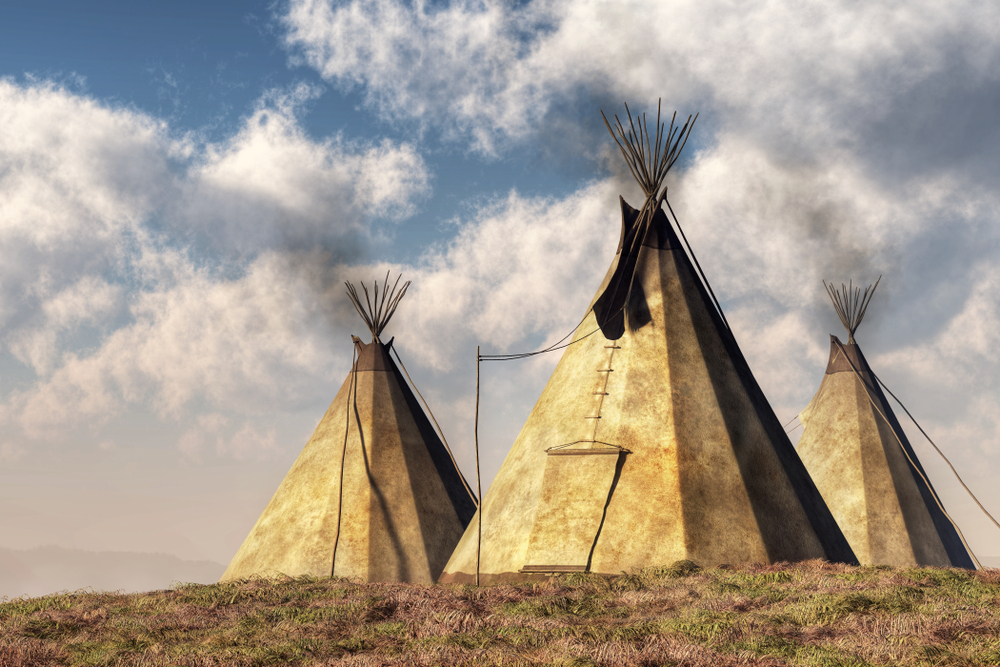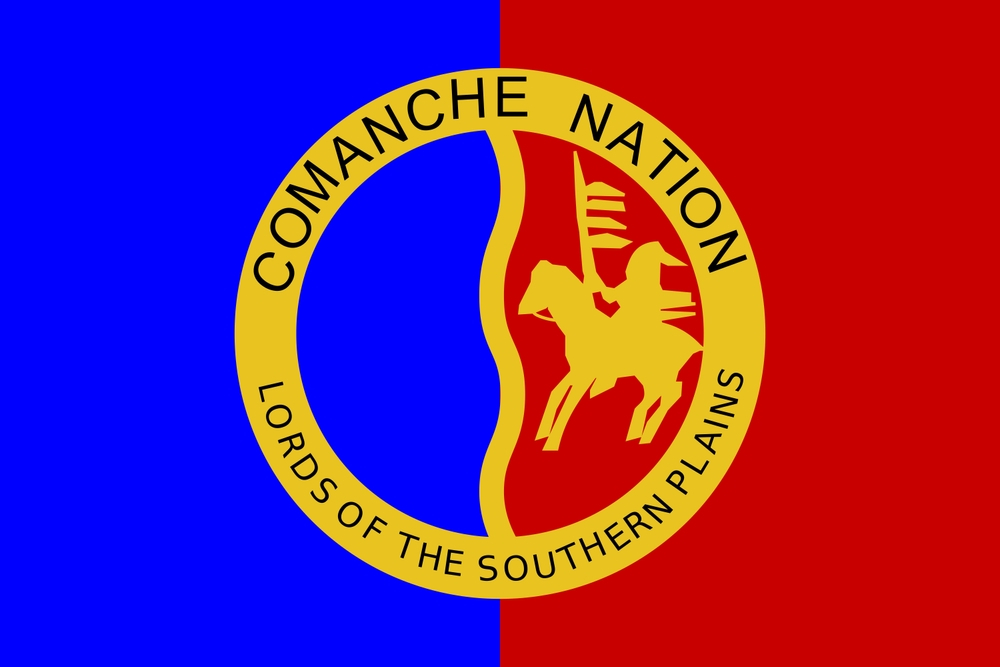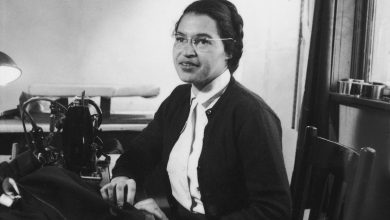From Warriors to Tradition: 10 Facts About the Comanche Tribe

The Comanche Tribe, known for their skilled horsemanship and formidable warrior culture, has a rich and complex history that spans centuries. Originating from the Great Plains, the Comanche played a crucial role in shaping the dynamics of the region through their interactions with other Native American tribes and European settlers.
Understanding the history and traditions of the Comanche is essential for appreciating the profound impact they had on the cultural and geopolitical landscape of North America. This blog post aims to shed light on ten fascinating aspects of Comanche history, society, and culture, providing a comprehensive glimpse into the lives of one of the most influential tribes in American history.
1. Origins and Migration
The Comanche Tribe’s origins can be traced back to the mountainous regions of what is now Wyoming. In the early 18th century, they began a significant migration southward, driven by the pursuit of better hunting grounds and the allure of the burgeoning horse culture. This movement led them to the Southern Plains, encompassing parts of present-day Texas, Oklahoma, and New Mexico.
During this period of migration, the Comanche encountered numerous other Native American tribes, including the Apache and Ute, often engaging in both trade and conflict as they established their dominance in the region.
With the arrival of European settlers, notably the Spanish, the Comanche’s interactions expanded further, leading to a complex web of alliances and hostilities that would shape the history of the Great Plains for generations to come.
2. The Horse Culture
The introduction of the horse dramatically transformed Comanche society, marking the beginning of a new era that would see the tribe become one of the most renowned horse cultures in North America. Horses, first introduced by the Spanish in the 16th century, revolutionized the Comanche lifestyle by enhancing their mobility, hunting efficiency, and prowess in warfare.
The Comanche quickly adapted to equestrian life, excelling in horseback riding to the extent that they became some of the finest horsemen of the Plains. This mastery of horseback riding and an acute understanding of horse breeding allowed the Comanche to develop swift, agile mounts perfectly suited for their needs.
In warfare, the horse gave the Comanche an unrivaled advantage, enabling them to execute lightning-fast raids and retreating tactics that left their adversaries often overwhelmed and outmaneuvered. This newfound mobility and effectiveness in battle solidified the Comanche’s dominance over vast territories and earned them a formidable reputation among both Native American tribes and European settlers.
3. Warrior Society
The Comanche warrior society was a foundational aspect of their culture, deeply embedded in the social and spiritual fabric of the tribe. Structured around a complex hierarchy, the warrior society was comprised of different bands, each led by a war chief renowned for his valor and strategic acumen.
The significance of this society cannot be overstated, as it not only dictated the Comanche’s military tactics but also influenced their daily lives and social organization. Young Comanche men were inducted into this warrior society through rigorous tests of bravery and skill, earning their place through acts of heroism and successful raids.
Notable conflicts, such as the Battle of Adobe Walls and the Great Raid of 1840, highlight the strategic prowess and fearsome reputation of Comanche warriors. These battles were not just mere skirmishes but pivotal events that reinforced the Comanche’s territorial control and resistance against encroaching settlers.
The warrior society, therefore, was not only a testament to their martial expertise but also a cornerstone of their identity, fostering a legacy of resilience and tactical ingenuity that resonated throughout their history.
4. Social Structure
The social structure of the Comanche tribe was intricately woven around families, clans, and leadership roles, reflecting a sophisticated system of organization and governance. At the heart of Comanche society were extended families and clans, which formed the fundamental units of social life. These clans provided the framework for mutual support, collective responsibilities, and social identity.
The Comanche practiced a matrilineal heritage, meaning lineage and inheritance were traced through the mother’s line. This system had significant implications for roles and responsibilities within the tribe, with women playing a pivotal role in maintaining lineage, property rights, and social cohesion.
Leadership within the tribe was typically held by respected elders and war chiefs, whose positions were earned through demonstrated wisdom, bravery, and leadership capabilities. These leaders were tasked with guiding the tribe in matters of war, diplomacy, and daily governance, ensuring the welfare and unity of their people.
Thus, the Comanche’s social structure not only emphasized the importance of family and clan affiliations but also balanced leadership and matrilineal ties, fostering a resilient and cohesive community.
5. Language and Communication
The Comanche language, a member of the Uto-Aztecan linguistic family, served as a vital means of communication within the tribe and played a crucial role in preserving their cultural identity.
Characterized by its unique phonetic and syntactical structures, the Comanche language was traditionally passed down orally through generations, encompassing a rich lexicon that reflected the tribe’s intricate knowledge of their environment, social customs, and spiritual beliefs.
However, like many indigenous languages, it faced significant decline due to the impacts of colonization, forced assimilation policies, and the dominance of English. Today, efforts to preserve and revitalize the Comanche language are being spearheaded by tribal elders, linguists, and cultural preservationists.
These initiatives include the development of language courses, educational programs for both youth and adults, and the creation of digital resources such as audio recordings and online dictionaries. By fostering a renewed interest in the Comanche language, these efforts not only aim to rejuvenate a critical aspect of Comanche heritage but also strengthen communal bonds and cultural continuity for future generations.
6. Daily Life and Traditions
Daily life and traditions within the Comanche tribe were rich and varied, forming a tapestry of cultural practices that were both functional and spiritually significant.
Traditional housing for the Comanche consisted of tipis made from buffalo hides stretched over wooden poles, designed to be easily assembled and disassembled, catering to their nomadic lifestyle.
The clothing reflected their resourcefulness and connection to the land, typically crafted from animal hides, such as deer and buffalo, and adorned with intricate beadwork and quill embroidery.
Their diet was largely reliant on buffalo, which provided meat, fat, and organs, supplemented by gathered plants, nuts, and berries. Seasonal cycles dictated much of their dietary intake, highlighting their deep environmental knowledge.
Key ceremonies and rituals were integral to the Comanche way of life, with events such as the Sun Dance playing a pivotal role in spiritual expression and community cohesion.
The Sun Dance, a multi-day ceremony, involved elaborate preparations, fasting, dancing, and physical endurance, underscoring the Comanche’s dedication to spiritual practices and the communal reinforcement of cultural values.
Each of these aspects—housing, clothing, diet, and ceremonies—illustrates the intricate balance the Comanche maintained between necessity and tradition, crafting a resilient and cohesive society deeply in tune with its surroundings.
7. The Comanche Economy
The Comanche economy was a dynamic system deeply rooted in both their natural environment and their extensive trade networks. Central to their economic practices was hunting, particularly of bison, which provided essential resources such as meat for sustenance, hides for clothing and shelter, and bones for tools and weapons.
The bison was not merely a food source but a cornerstone of the Comanche sustenance strategy, enabling them to thrive in the Great Plains. Additionally, the Comanche engaged in robust trade practices and economic interactions with neighboring tribes and European settlers, exchanging bison products, horses, and captives for goods like cloth, metal tools, and firearms.
These interactions facilitated a diversified economy that allowed the Comanche to amass wealth and influence across vast territories. As adept traders, they emerged as central figures in the regional economy, leveraging their strategic position and resources to navigate and influence the complex trade networks of the period.
8. Relations with Other Tribes and Settlers
The Comanche tribe’s interactions with other tribes and settlers were marked by a complex web of alliances, conflicts, and treaties, profoundly influencing their history and development. Initially, the Comanche forged strategic alliances with tribes such as the Kiowa, enhancing their military power and fostering mutual economic benefits through shared trade networks.
However, their relationships with other tribes, including the Apache and Pawnee, often led to fierce conflicts over territory and resources, showcasing their dominant position on the Great Plains. The arrival of European colonizers and subsequent American expansion significantly impacted the Comanche way of life.
Early encounters involved trade and negotiation, but these soon gave way to violent clashes as settlers encroached on their lands. The imposition of treaties frequently reflected the unequal power dynamics, often resulting in the loss of Comanche territory and autonomy.
Despite this, the Comanche demonstrated resilience in adapting to new challenges, continuing to assert their presence and negotiate their survival in an ever-changing landscape shaped by European colonization and American expansion.
9. Modern Comanche Society

Modern Comanche society embodies a rich tapestry of resilience and revitalization as the Comanche Nation continues to thrive while navigating contemporary challenges. Today, the Comanche Nation is a federally recognized tribe with approximately 17,000 members, primarily residing in southwestern Oklahoma.
This strong community actively engages in cultural preservation and education initiatives, seeking to safeguard their heritage and pass it on to future generations. Efforts include comprehensive language revitalization programs, where both youth and adults learn the Comanche language through immersive courses and digital tools.
Additionally, cultural education is reinforced through tribal museums, cultural events, and traditional ceremonies that celebrate and teach about Comanche history, art, and spirituality. By prioritizing these initiatives, the Comanche Nation not only honours their profound legacy but also fosters cultural pride and continuity within their community.
10. Notable Figures
Prominent leaders and influential figures in Comanche history have left an indelible mark on both their culture and the broader American narrative. Chief Quanah Parker stands out as one of the most significant leaders, known for his strategic acumen and diplomatic skills.
As the last chief of the Comanche Nation, Quanah Parker played a crucial role in negotiating the transition from a nomadic lifestyle to life on a reservation, while also advocating for the rights of his people.
Another influential figure, Cynthia Ann Parker, Quanah’s mother, symbolizes the deep cultural exchange between settlers and the Comanche, having been assimilated into the tribe after her capture and later becoming an influential member. Both figures highlight the resilience and adaptability of the Comanche people during times of immense change.
Their contributions not only strengthened Comanche society but also impacted American history, serving as poignant reminders of the complex intersections between indigenous and settler cultures.
Conclusion
From the Comanche’s origin as formidable warriors of the Great Plains to their rich tapestry of traditions and resilient modern society, their story is one of profound significance and enduring strength. This exploration into the ten facets of Comanche life reveals a people deeply connected to their land, culture, and community.
The Comanche’s adeptness at hunting, their dynamic economic practices, intricate social structures, and spiritual devotion have all played key roles in shaping their unique identity.
Encounters with European settlers and other tribes have undeniably influenced their history, bringing challenges yet also opportunities for growth and adaptation. Figures such as Chief Quanah Parker and Cynthia Ann Parker showcase the resilience and leadership that have carried the Comanche through transformative periods.
Today’s Comanche Nation continues to honour their heritage through cultural preservation and education, ensuring that their storied past and vibrant traditions thrive for future generations. As we reflect on the rich legacy of the Comanche Tribe, we are encouraged to delve deeper into Native American cultures, acknowledging their invaluable contributions and participating in ongoing efforts to support and preserve their profound heritage.




